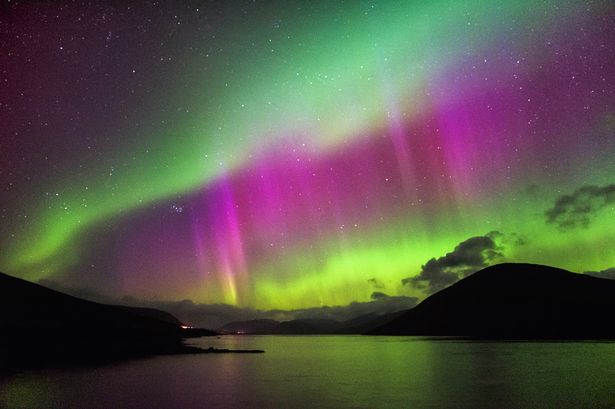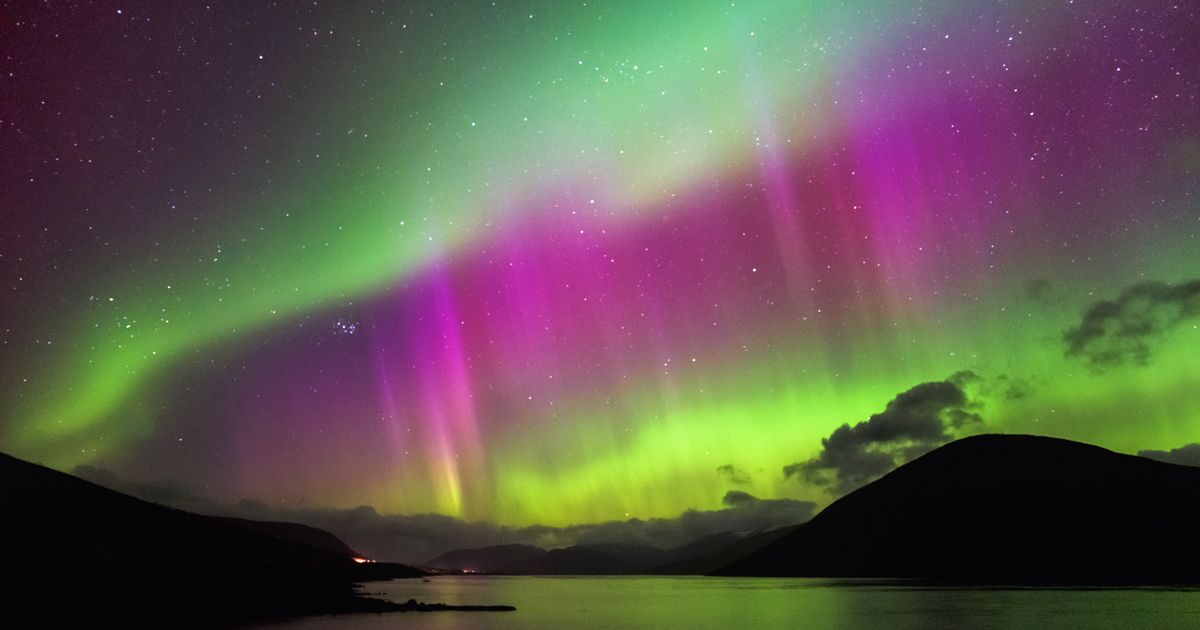A series of solar storms are set to bring impressive Northern Lights this week Aurora Borealis could dazzle across the UK tonight(Image: Getty Images)
Aurora Borealis could dazzle across the UK tonight(Image: Getty Images)
Sky watchers across the UK could be treated to stunning Northern Lights displays over the next few nights.
It comes as four coronal mass ejections (CMEs) are set to hit Earth between October 15 and 17, bringing an increased chance of geomagnetic activity.
Also known as the aurora borealis, the Northern Lights are caused by large explosions of activity from the Sun, which throw out huge amounts of charged particles into space.
When these particles are captured by the Earth’s magnetic field they can collide with gas molecules in the atmosphere in an event called a geomagnetic storm. Light is emitted from these collisions at various wavelengths, forming spectacular colourful displays in the sky.
 The Northern Lights could light up UK skies tonight(Image: Getty Images)
The Northern Lights could light up UK skies tonight(Image: Getty Images)
As a result of the latest solar storms, the Northern Lights could be visible further south than usual – including above UK skies.
The Met Office said in its space weather forecast on Wednesday (October 15): “Where cloud breaks allow across northern Scotland enhancements to the auroral oval may be seen overnight UTC Wednesday/Thursday.
“This is due to enhanced geomagnetic activity related to an Earth-directed Coronal Mass Ejection (CME). Geomagnetic Activity may remain Active into Friday UTC due to further glancing CMEs.”
According to Met Office aurora maps, the best chances of spotting the Northern Lights are around midnight tonight.
 The Met Office forecasts a 90% chance of aurora on Wednesday/Thursday night(Image: The Met Office)
The Met Office forecasts a 90% chance of aurora on Wednesday/Thursday night(Image: The Met Office)
The first of four CMEs launched between October 11 and 13 is set to reach Earth late on Wednesday. The most significant aurora displays will take place early in the morning on Thursday (October 16), with further geomagnetic activity expected on Friday.
The US National Oceanic and Atmospheric Administration (NOAA) has said geomagnetic disturbances will reach G2 levels on Wednesday night and Thursday, which could extend to northern parts of the UK and US.
“Go out at night. Get away from city lights,” the NOAA said on its website.
“Best aurora is usually within an hour or two of midnight (between 10pm and 2am local time). These hours of active aurora expand towards evening and morning as the level of geomagnetic activity increases.
“There may be aurora in the evening and morning but it is usually not as active and therefore, not as visually appealing.”

